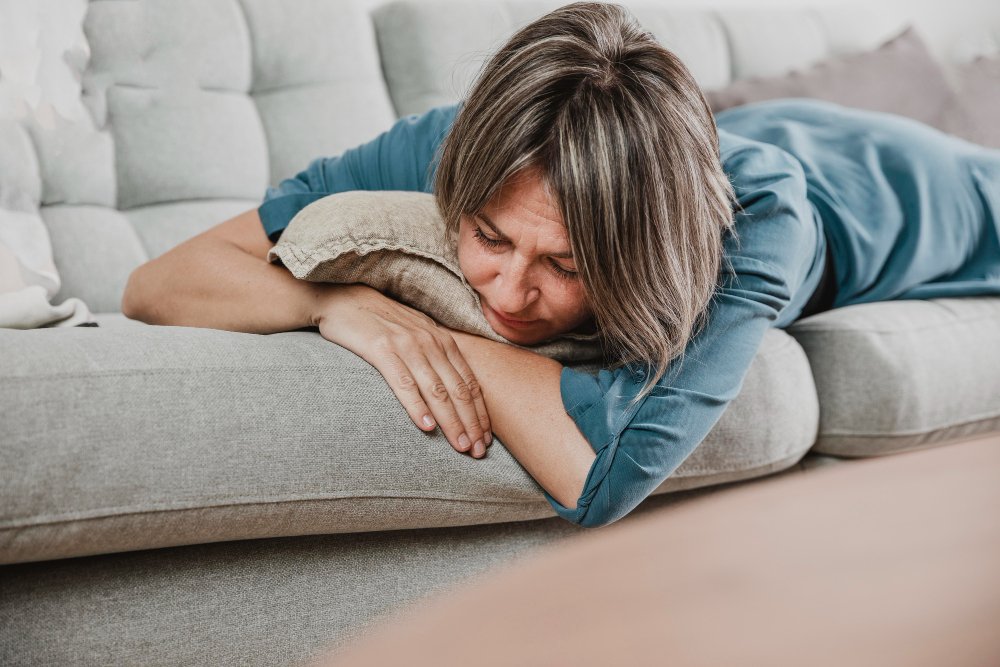When a Painful Cramp isn’t Just a Painful Cramp: a Guide to Endometriosis
Tanvi Mehta
June 2024
Endometriosis is a disease in which tissue similar to that in the lining of the uterus grows elsewhere within the body.[5] When this tissue is in the uterine lining, it regularly breaks down and leaves the body through the menstrual cycle. [4] However, when this tissue is produced outside the uterus it does not have means of exiting the body, causing inflammation and scarring within the pelvic region.[5]

Symptoms
Up to 30% of endometriosis patients do not present with any symptoms at all.[6] However, those that do, often present with excessively painful periods, pain with bowel movements and urination, pain during or after sex, excessive bleeding, infertility, irregular periods, fatigue, and spotting between periods.[3]
Patient Population
Around 10% of women have endometriosis and patients that get diagnosed are usually between the ages of 25 and 40, but endometriosis can start to present in teen years as well. Some risk factors include having a family history of endometriosis, starting periods at a young age (11 or younger), having shorter amounts of time between periods, and defects within your uterus or fallopian tubes.[1]
What does getting diagnosed look like?
Diagnosis begins with your doctor taking a thorough patient medical history which can often give insight. Questions like asking the patient if their periods have always been this painful or if they have any family history of endometriosis can often help doctors discern whether the patient is experiencing endometriosis or potentially another condition.[6]
If the doctor suspects endometriosis, typically they will start with a pelvic exam in which they feel around in the pelvic area with gloved hands for any unusual changes like cysts or irregular growths. Usually, areas of endometriosis cannot be felt in a pelvic exam unless a cyst has formed in the area. If the doctor suspects something, they may move onto ultrasounds which can help to show a better picture of the reproductive organs and any cysts on them. However, an ultrasound is unable to fully confirm the diagnosis and other options like Magnetic Resonance Imaging (MRI) might be needed to get a fuller picture. At this point, a clinical diagnosis based on imaging and symptoms can be made.
Treatment Options
Treatment can vary a lot depending on different factors like progression and severity of the disease, plans for future pregnancies, and age. Medications are often used to symptomatically treat patients’ pain as well as increase fertility.
While these medications may work short-term, the long-term solution to relieve the chronic discomfort from endometriosis is surgery. The problem with surgery is that even with it, symptoms may come back in a few years depending on the disease severity.[1] Laparoscopy, a surgical procedure to check inside the abdomen for signs of endometriosis, is used to get information about the progression of endometriosis growths and also remove them. [4] In severe cases, a hysterectomy may be the best option, considering the progression of the disease and the amount of scar tissue. A hysterectomy is a surgical procedure in which the uterus is entirely removed from the patient’s abdomen.[1]
Causes
Scientists still do not exactly know what the cause of endometriosis is, but it is likely caused by multiple factors like genetics and altered immune system function. The most common theory explaining its origin is the retrograde menstruation theory. This theory suggests that some menstrual blood and uterine lining tissue, which normally exits through the vagina, flows back into the fallopian tubes and pelvis. Thus, endometrial cells attach and grow on tissues in the pelvis.[6]
Often Being Misdiagnosed and Overlooked
The problem with endometriosis diagnosis is that each person’s menstrual cycle experience is unique and subjective. Sometimes, what a patient might believe to be cramp pain at their regular tolerance level could actually be pain from endometriosis. Oppositely, what patients might tell their doctors is unusual extreme pain, might be dismissed as just period cramps. Endometriosis patients often do feel ignored and isolated as their broad symptoms are difficult to diagnose with such little attention being paid to endometriosis in the greater medical domain.[2]
Outlook
Endometriosis is a condition that can affect a person’s daily life, causing long-term pain, disruptions in menstrual cycles, and even infertility. However, patients with endometriosis can very much still have full and meaningful lives with proper diagnosis and treatment![1]
References
[1] Cleveland Clinic. (n.d.). Endometriosis: Causes, symptoms, diagnosis & treatment. Cleveland Clinic. https://my.clevelandclinic.org/health/diseases/10857-endometriosis
[2] Hudson, N. (2022). The missed disease? endometriosis as an example of ‘undone science.’ Reproductive Biomedicine & Society Online, 14, 20–27. https://doi.org/10.1016/j.rbms.2021.07.003
[3] Johns Hopkins Medicine. (n.d.). Endometriosis. Johns Hopkins Medicine. https://www.hopkinsmedicine.org/health/conditions-and-diseases/endometriosis
[4] Mayo Foundation for Medical Education and Research. (2023, October 12). Endometriosis. Mayo Clinic.https://www.mayoclinic.org/diseases-conditions/endometriosis/diagnosis-treatment/drc-20354661
[5] World Health Organization. (n.d.). Endometriosis. World Health Organization. https://www.who.int/news-room/fact-sheets/detail/endometriosis#:~:text=Overview,period%20and%20last%20until%20menopause.
[6] Yale Medicine. (2024, March 11). Endometriosis. Yale Medicine. https://www.yalemedicine.org/conditions/endometriosis





